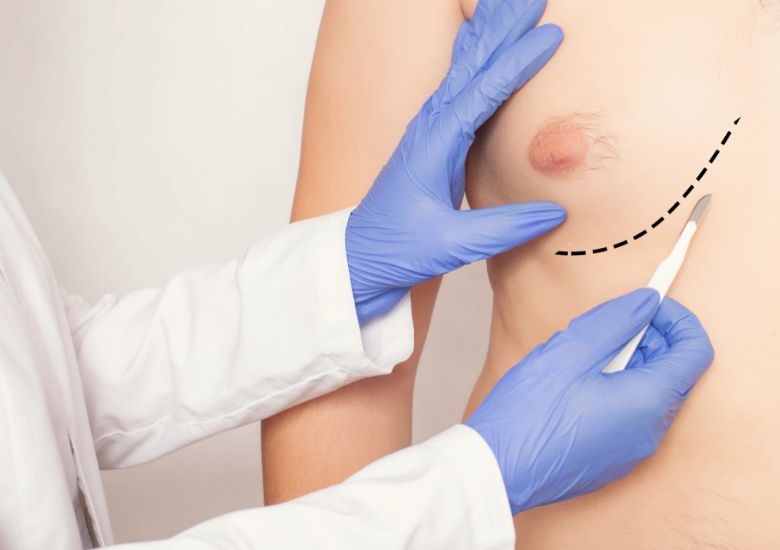Gynecomastia
INTRODUCTION TO
Gynecomastia
Gynecomastia is a fairly regular disorder that causes increased male breast tissue. Males of all ages can exhibit it, but it is most common during puberty and later adulthood. Gynecomastia can be caused by a variety of factors, but most
frequently, a testosterone and estrogen imbalance.
The breast is composed of fatty tissue and glandular tissue, whether it belongs to a man or a woman. Each person’s breast has a different proportion of glandular to fatty tissue. Depending on the person, the condition can range in intensity from hardly perceptible symptoms to a considerable enlargement of the male breast, complete with sagging skin. The disorder might affect one or both breasts, sometimes in an uneven way. Diet and exercise alone cannot treat the condition, so the breast glands and fat tissues must be surgically reduced. Obese
individuals may develop larger breasts as a result of extra fatty tissue. This isreferred to as pseudogynecomastia.
Gynecomastia can also be developed because of some conditions:
- kidney disease
- liver disease
- alcoholism
- -Adrenal tumors
- thyroid disease
- lung cancer
- anabolic steroid use
Your suitability for gynecomastia surgery is mostly dependent on the condition of your skin. You should be within 10% of your target body weight and have good skin elasticity to get the optimal results from the surgery. After liposuction and gland removal, the skin can usually shrink and adjust to the new
body contour.
It is a condition that can affect how men feel about themselves in a very negative way. It can be a heavy burden, with strong psychological effects, that can often lead to depression.


Consultation
Your physician will assess your symptoms, conduct a physical examination, and go over your health and family history. A blood and urine test to assess
hormone levels may also be needed, as well as a mammography to look for odd growths or changes in breast tissue.
Your medical history, current medication, conditions and cosmetic goals will all be taken into account. This will allow your doctor to provide a full treatment plan, specifically tailored to your needs.
Prior to your operation, you will be required to refrain from smoking, drinking alcohol, and taking anti-inflammatory drugs, as they facilitate bleeding.
Procedure
In certain cases, gynecomastia can be treated with a liposuction alone, where the fatty tissue is removed. However, in most instances, a surgical excision
is required. This method is typically used for patients with stretched, sagging skin around the breasts. A cosmetic surgeon can use tissue excisions to remove more glandular tissue and/or skin that liposuction cannot effectively address.
Excision is a surgery that takes between two to three hours, and is typically performed under general anesthesia. To surgically remove the excessive fatty and glandular tissue, the surgeon makes a small incision around the areola. They are then removed using a tiny metal tube called a cannula. The incision will then be stitched up by the surgeon using dissolvable sutures. While you will see immediate change, you might need up to six months to truly enjoy the full benefits of your operation.

Recovery
The patient is given a compression garment to wear for the first two to four weeks, depending on the healing process, to help reduce swelling. Some pain relieving medication will be prescribed by the doctor, along with a full recovery plan. Minor bandages are normally applied and changed the next day. For roughly three weeks, strenuous exercise, heavy lifting, and smoking are forbidden. If the job is not physically demanding, the patient can go back to work after a few days.
Risks
As with any operation, some complications might arise after a surgical excision for gynecomastia:
- bleeding
- infection
- swelling
- bruising
- asymmetry
WE ARE HERE TO HELP YOU
Do you have any questions?
Let our medical experts answer all your inquiries and offer the solution that best fits your cosmetic needs.


